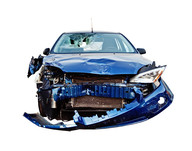
Trading Standards have received the following information from West Midlands Police and would like to share the news report, and more importantly, the advice, with our local residents:
Members of a chop shop gang were jailed for almost 25 years in December after West Midlands Police linked them to more than 100 stolen cars.
Mohammed Nadeem, Nadeem Arshad, Zahir Hussain and Amaan Zameer snapped up damaged vehicles from salvage auctions rated as repairable write-offs and fixed them using parts stripped from stolen cars.
The stolen vehicles were dismantled at so-called chop shops in Birmingham before patched-up and cars were sold on to unsuspecting buyers via online sales sites.
The cars were taken during burglaries and carjackings but there were many more victims who lost money buying cloned vehicles.
Read the full news report.
Now a West Midlands Police’s specialist vehicle examiner − a man who can spot a cloned car in seconds − has issued a guide to help used car buyers avoid being scammed:
1) Trust your gut instinct. If you have any suspicions or something doesn’t seem right − perhaps the price is too good to be true − just walk away. You might lose the car − but there will be plenty more cars for sale and you might save yourself a lot of pain.
2) Try to use an established, VAT registered dealer. Visit the premises and take a look around, chat to the staff. Do a search online; do they have a Trustpilot or similar rating? By using a dealer they will be more likely to give you a refund should something go wrong as they have reputations to uphold.
3) Always ask for paperwork. The system of continuous registration means the old excuse of "waiting for the log book" doesn’t apply these days. Inspect the V5C (Log Book) carefully to ensure it is genuine and the vehicle details (chassis number, make, colour, engine size) match the one you’re buying. Ensure the paper is intact and undamaged, and that there is a watermark on the paper when held up to the light.
4) Ask if the vehicle has ever been subject to a salvage classification − most importantly Cat D or C which means it may have previously suffered considerable damage. Recently this changed to S and NS which stands for Structural (CAT C) and Non Structural (CAT D). Be wary as these are not statutory classifications, and are imposed by individual insurance assessors. This isn’t usually a problem, but the repair needs to be carried out by professionally trained technicians using equipment and spare parts of the correct standard. Remember your safety could depend on their skill, you rely on items such as airbags deploying correctly. At present private sellers don’t need to advertise the Cat status but should provide it if asked.
5) Insist on seeing a copy of the HPI (car history check) or similar check. There are a number of such checks available online but these should not be seen as 100% accurate. There is a cost for these − but it could save you a lot of money.
6) Ask for the service history, especially if the vehicle is less than three years old. Many are advertised with ‘Part Service History’ but be very aware as these can be falsified, so look closely and compare the mileage at the last service to that shown on the vehicle.
7) Use a credit card to pay a deposit of over £100 as, if the deal turns sour, you can apply for a refund for the full amount paid out from the lender under the Consumer Credit Act (up to £30,000). Debit cards don’t offer the same protection. And try to avoid paying with cash!
8) Be very wary if the seller cuts the price from what already appears a low market value in order to secure your purchase… that should ring alarm bells. If the vehicle is a clone or has stolen parts fitted to it, then whatever they make from the sale will be profit as they haven’t paid for the car or parts.
9) All cars are originally supplied with up to three keys, if you are only handed one key be careful, if two or three always make sure that they start the vehicle, and lock and unlock the doors.
10) View the car somewhere of your choosing; under no circumstances in a car park or a lay by. The seller may offer to deliver the car − that may seem convenient but it could be a ploy to distance themselves from their own area. Always check the car in daylight when possible.
11) Photos − take photos of the car and also, if necessary a discrete photo of the seller at the same time. But obviously don’t put yourself at risk when doing this. It will assist a police investigation if the suspect claims they weren’t there. Taking a photograph in a public place is lawful. Or can you view the vehicle somewhere that’s covered by CCTV?
12) Take along someone who knows about cars: they can check the car mechanically and will know how to find the car’s identity markers like the Vehicle Identification Number (VIN), a VIN label or plate, and normally a Visible VIN which is located on the passenger side of the windscreen. Often suspicious vehicles may have this feature covered conveniently by a car park ticket or other piece of paper.
Inform the police if you become suspicious of a vehicle or seller. Anyone who suspects a garage or unit is being used to handle and strip down stolen cars should contact West Midlands Police via Live Chat at WMP Online or calling 101.
Top of page
|